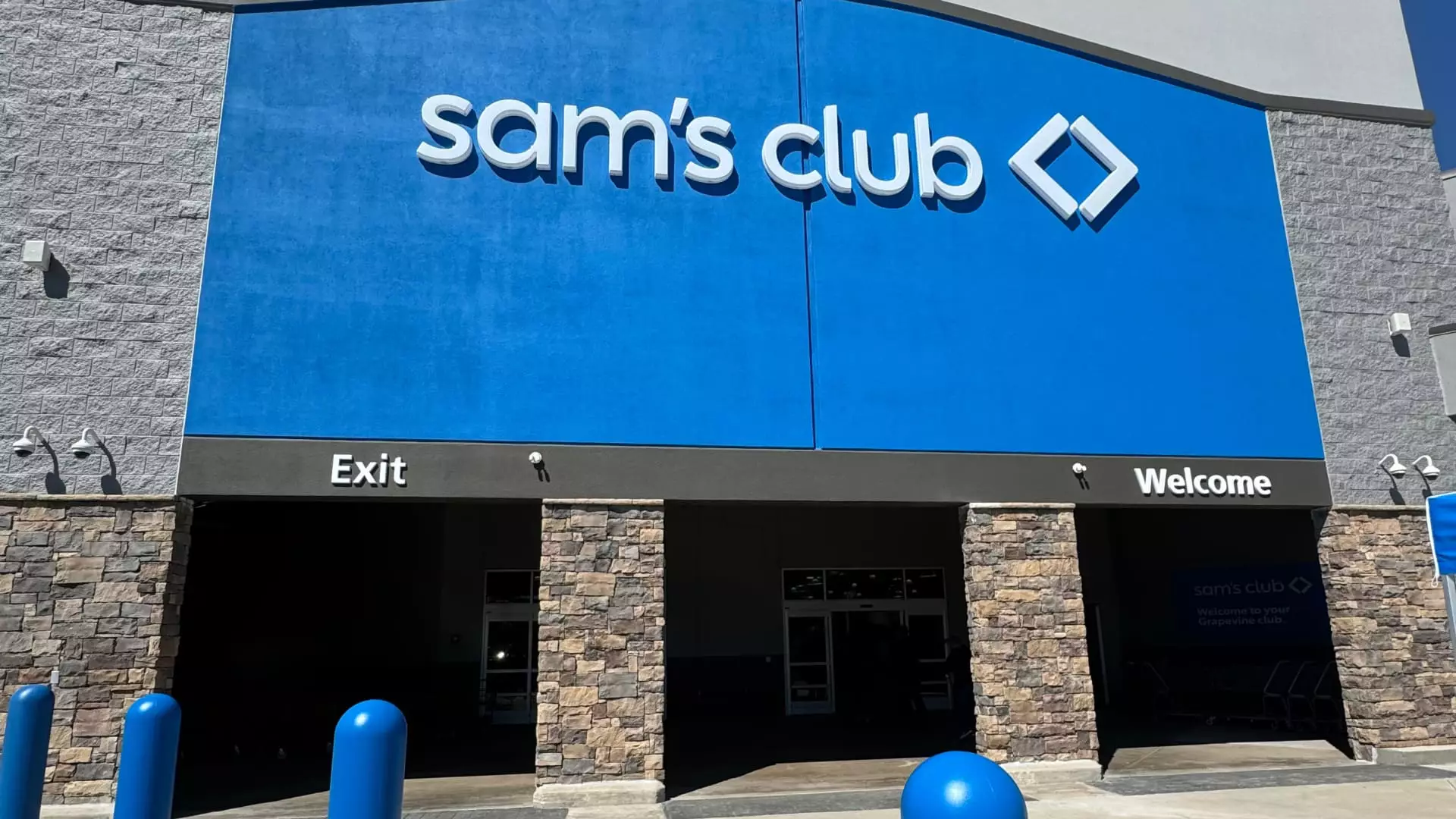In an ever-evolving retail landscape, Sam’s Club is embarking on a radical shift with the opening of its all-digital store in Grapevine, Texas. As a Walmart subsidiary, this innovative store aims to redefine convenience for its members. Noteworthy features, including a shiny blue Mercedes-Benz SUV prominently displayed inside and a modern sectional sofa, signal a departure from traditional shopping environments. Most significantly, the store will operate without any conventional checkout lanes, compelling shoppers to rely solely on the Scan & Go application to manage their purchases seamlessly as they navigate through the aisles.
This technological leap is not merely about adopting a new app; it reflects a broader vision of enhanced customer interaction. Instead of facing long checkout lines, members will engage with their shopping experience in real-time, eliminating the friction that often accompanies retail transactions. Such an approach could fundamentally change how consumers perceive the shopping experience, aligning it more closely with digital-era expectations.
Inside the store, a space traditionally reserved for checkout counters will now serve as an interactive display area for online-exclusive items. From extravagant 12-foot Christmas trees to five-carat lab-grown diamonds, these offerings will be paired with QR codes to facilitate quick access via the mobile app. This integration of e-commerce within a brick-and-mortar setting not only enhances variety for shoppers but also streamlines their experience.
As Sam’s Club leaders have articulated, this is more than just a trendy gimmick; it serves as a proving ground for future retail innovations. The store’s design amplifies the company’s focus on e-commerce, preparing it for a future where digital engagement becomes the norm. Instead of viewing online shopping as a separate entity, Sam’s Club aims to merge it with in-store experiences, thereby creating a comprehensive shopping ecosystem that could potentially attract a wider demographic, especially tech-savvy millennials and Gen Z customers.
Sam’s Club is not merely reacting to changes in consumer behavior; it is proactively shaping its offerings to stay competitive, particularly in the face of established rivals like Costco. The introduction of live sushi-making stations and the consolidation of private labels into the Member’s Mark brand exemplifies the club’s strategy to offer unique experiences while simplifying purchasing decisions for customers.
Moreover, their focus on enhancing operational efficiency demonstrates a keen understanding of evolving customer demands. By reducing product diversity to emphasize popular items and improving the shopping experience with services like raised hourly wages for employees and automated order fulfillment systems, Sam’s Club strives to entice new members while retaining existing ones.
As customer expectations shift toward convenience and streamlined experiences, retailers that successfully navigate this transition stand to benefit significantly. Sam’s Club’s recent quantitative success—reporting a 5.2% increase in comparable sales quarter-over-quarter—indicates that their strategies are already resonating with consumers.
Despite the excitement surrounding technological advancements, challenges loom over the implementation of an entirely digital shopping environment. Many consumers may harbor reservations about adapting to new routines or employing unfamiliar technology during their shopping experiences. For instance, individuals like Tiffany Zuniga, who values the simplicity of in-store customer service, may find the transition disconcerting.
Zuniga’s concerns highlight an essential balance: while embracing technology is crucial for staying relevant in today’s market, maintaining a human element remains vital to customer satisfaction. In addressing these concerns, Sam’s Club must ensure adequate staff support, ready to assist shoppers who may struggle with the new digital tools.
Looking Ahead: The Roadmap for Sam’s Club
As Sam’s Club gears up for a broader rollout of its all-digital format, the company is laying the foundation for further expansion, with plans to introduce 30 new clubs over the next five years. The move to digitize shopping not only signifies an operational overhaul but also positions the retailer as a future-oriented competitor in the rapidly changing retail industry.
By reimagining the shopping experience and implementing cutting-edge technology, Sam’s Club is poised to attract a diverse range of consumers while addressing the challenges presented by tech adoption. The success of the Grapevine store will serve as a bellwether for the broader retail industry, underscoring the imperative to adapt to and embrace change in a world increasingly dominated by digital engagement. In witnessing this transformation, both consumers and competitors will be watching closely to see how these new strategies unfold in the coming years.

